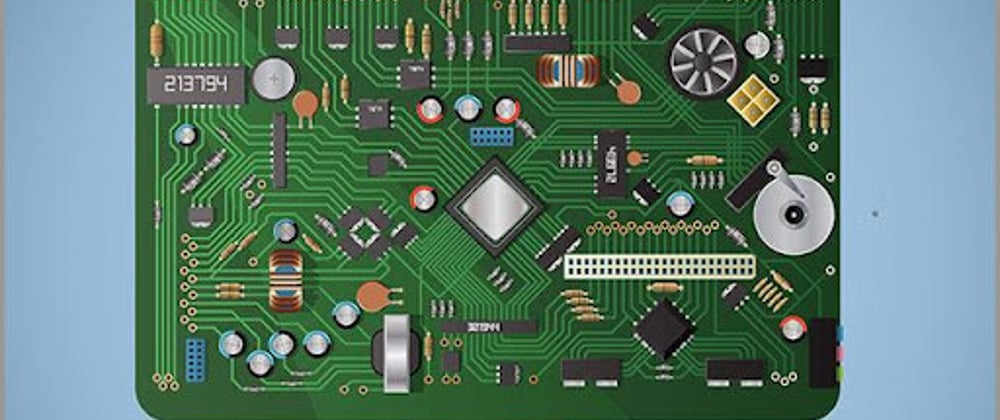Metals are utilized for the construction of printed circuit boards (PCBs). Such kinds of PCBs are regarded as Metal Core Printed Circuit Boards (MCPCBS). The kind of metal you need is determined by utilization. Aluminum PCBs are a famous kind of MCPCBS, and they are employed in a wide range of things. They are constructed from laminates. As a result of its design, the circuit board becomes a good electrical non-conductor and heat conductor.
It also improves the efficiency of PCBs. In this article, we will go over the fundamentals of aluminum PCBs. The structure of these PCBs, and their utilizations, are described here.
What is Aluminum PCB?

They are capable of dispersing heat from electrical devices. Amongst the majority of the prevalent kinds is an aluminum PCB. It has an aluminum section and usual FR4 lamination. A heat clad layer on the circuit board aids inefficient heat dispersal. They are commonly utilized in situations that need strict tolerances and a lot of energy.
Reasons for Using Aluminum PCBs
Various sectors and people have hiked up the need for construction after the launch of aluminum PCB in the 1970s. Assume you are going to use heat-dissipating apps and want to be able to manage the temperatures. Aluminum PCB is the best option for you during such circumstances.
Aluminum is famous for transporting heat from the most important parts. Your PCB will be safe from thermal destruction as a result of this. Furthermore, in comparison to other parts, it's quite resilient and may last a lengthy period.
Structure of the Aluminum PCB
It features a four-layered actual construction:

Copper Foil Layer
In comparison to standard CCLs, the copper layer employed here is considerably bigger (1oz to 10oz). Copper featuring a thick layer has a huge electricity carrying capability.
Dielectric layer
It is an extreme heat conductivity layer ranging in thickness from 50 to 200 micrometers. It featured a reduced heat opposition and was appropriate for its intended use.
Aluminum Base
The aluminum base comprises metal. It features an extremely high heat conductivity.
Aluminum Base Membrane Layer
It behaves like a shield against scrapes and undesirable etching of the metal exterior. It can be less than 120°C or higher than 250°C.
Method of Storing Aluminum PCBs
MCPCBs feature the defect of collecting humidity and discoloration. Suppose you will utilize the vacuum; you should do it in a span of 48 years of opening the package. If you want to keep it for a lengthier period without utilizing it, keep it in a dim, moist-free location.
Types of Aluminum PCBs
Through-Hole Aluminum PCBs
They feature aluminum that has undergone pre-drilling. Afterwards, a dielectric item is utilized during the backfilling holes process.
Flexible Aluminum PCBs
In such PCBs, flexible dielectrics featuring increased plasticity, heat conductivity, and electrical non-conductor are utilized. In situations where a mixture of these dielectrics with aluminum could be observed, the outcome is an item that is extremely flexible and can be moulded into several shapes. This cuts down on the number of exorbitant connectors and fixtures required.
Hybrid Aluminum PCBs
They are commonly utilized in RF operations and feature greater heat carrying capacity than the usual FR4 things.
Advantage of Aluminum PCBs
Light-weight
It is amongst the most significant attraction of these PCBs. Aluminum is an incredibly light metal. As a result, it has some contributions to the PCBs extreme force and power.
Heat Dissipation
When crucial circuit board parts are liable to hiked temperatures, they might be destroyed. As a result, it is crucial to utilize a heat-dissipating item to prevent them from that kind of harm. Aluminum possesses the capacity of moving heat from the board's crucial parts and safeguarding them from all possible destruction.
Durable
Aluminum is a strong and durable substance. Aluminum circuit boards are less likely to break unintentionally during transportation, production, or frequent use. This could give a product more robustness when in comparison to fiberglass and ceramic bases.
Friendly to the Environment
Aluminum eco-friendly PCBs are simple to produce and save up energy. Asides that, it is reusable and not harmful. Owing to that, it is eco-friendly and helps to preserve nature.
Economical
Aluminum is capable of being unearthed in practically any climate, thereby getting things simpler to extract and process. This aids in price reduction. Hence, aluminum production is far more reasonably priced than that of other metals.
Where It Should Be Used
Since the dielectric non-conducting object is a perfect match for reducing the heat created throughout the operation and is capable of withstanding extreme temperatures, the Aluminium PCB is extensively utilized for things that require heat dissipation.
Aluminium PCBs are utilized in situations where a desire for a small package for the existence of an aluminum metal substrate, that's lighter in comparison to fiberglass and ceramic supplies, ensures a smaller package size.
Aluminium boards constructed from harmless Aluminum parts and emit zero toxins, are a superb choice for power distribution purposes like DC/AC converters.
Aluminium boards are utilized in audio gadgets like input and output amplifiers and energy amplifiers because they are durable and supply consistent efficiency.
They are extremely sturdy thanks to their aluminum metal foundation, thereby making them ideal for purposes that must survive harsh situations.
Due to the smaller package dimension of the aluminium metal foundation, these boards are utilized in the automotive and RF industries because they are durable and permit efficient space utilization.
Aluminum designs are employed in installed LEDs featuring greater currents and are capable of maintaining temperature opposition. An LED gadget featuring an aluminum circuit design features a greater longevity and is extremely stable. Stoplights, street lights, and residential lighting all utilize aluminum substrates.
Aluminium circuit concepts are normally utilized in power device surface mount technology due to their strong dielectric energy and electromagnetic protection.
Conclusion
Aluminum PCBs are usually superb at heat transfer, employ a surface mount system, utilization of an aluminum material rather than a ceramic one, and feature a reduced manufacturing power in comparison to alternative PCBs.








Top comments (0)